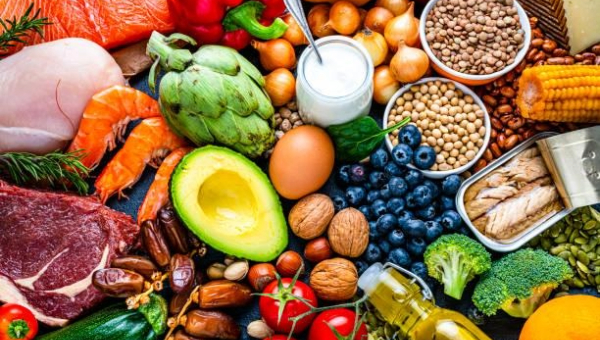How to Eat Healthy: A Sustainable Approach to Nourishing Your Body
May 23, 2025
How to Eat Healthy: A Sustainable Approach to Nourishing Your Body
Introduction
In a world brimming with diet trends and conflicting advice, eating healthy can feel overwhelming. Yet at its core, healthy eating is about nurturing your body with wholesome foods that boost energy, enhance mood and support long-term well-being. This guide offers practical, sustainable strategies to help you build a balanced relationship with food no deprivation required.
1. Build Balanced Meals
Aim for meals that include a mix of macronutrients (carbs, proteins, fats) and micronutrients (vitamins, minerals).
- Fill half your plate with colorful veggies or fruits for fiber and antioxidants.
- Add lean protein (chicken, beans) and healthy fats (avocado, nuts, olive oil).
- Choose complex carbs like quinoa or sweet potatoes for lasting energy.
2. Prioritize Whole Foods
Whole foods are minimally processed, retaining more nutrients and fiber.
- Shop smart: Focus on the grocery store’s perimeter (produce, dairy, meats) and read labels to avoid added sugars and sodium.
- Healthy swaps: Opt for whole-grain bread over white, or snack on almonds instead of chips.
- Budget-friendly:Frozen veggies and seasonal fruits are nutritious and cost-effective.
3. Master Portion Control
Even healthy foods can lead to weight gain if portions are oversized.
- Use hand guides: A fist-sized portion of carbs, a palm-sized protein, and a thumb-sized fat serving.
- Downsize dishes: Smaller plates trick your brain into feeling satisfied with less.
4. Hydrate Wisely
Water is vital for digestion, energy, and skin health.
- Daily goal: Aim for 8 glasses, adjusting for activity level and climate.
- Infuse flavor: Add citrus, berries, or mint to water.
- Limit sugary drinks: Swap soda for sparkling water with a splash of juice.
5. Plan Ahead
Meal prep reduces reliance on convenience foods.
- Batch cook: Prepare grains, proteins, and roasted veggies for easy assembly.
- Snack smart: Keep nuts, yogurt, or cut veggies handy.
- Cook at home: Control ingredients and experiment with herbs instead of salt.
6. Embrace Moderation
Deprivation often backfires. Allow flexibility!
- Follow the 80/20 rule: Eat nourishing foods 80% of the time and enjoy treats guilt-free the rest.
- Savor indulgences: Eat mindfully, savoring each bite of dessert or your favorite snack.
7. Tune Into Your Body
Reconnect with hunger and fullness cues.
- Eat slowly: It takes 20 minutes for your brain to register fullness.
- Notice patterns: Does sugar crash your energy? Do veggies boost your mood? Adjust accordingly.
Conclusion
Healthy eating isn’t about perfection it’s about progress. Start with small changes, like adding a vegetable to every meal or drinking more water. Celebrate victories and remember that sustainability beats strictness. For personalized guidance, consult a registered dietitian. Your body and taste buds will thank you!
Stay safe and healthy!
Recent Post

How to Build a Skincare Routine from Scratch: A Beginner’s Guide to Glowing Skin

Three Types of Stress: Causes, Effects & How to Cope

Did You Know? What You Eat Has a Direct Effect on Your Skin?

Stay Ahead of the Flu: Why Getting Vaccinated This Winter is Your Best Defense

Top Causes of Hypertension + Management Tips

Living with Diabetes: Daily Habits for Better Blood Sugar Control

Understanding Your Prescription: A Guide to Labels

Tips for Healthy Aging: Embrace Wellness at Every Stage of Life

Did You Know? Sleep Deprivation Has a Serious Effect on Your Brain

Prioritizing Mental Health: A Key to Overall Well-Being



